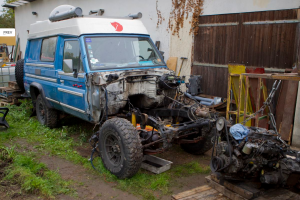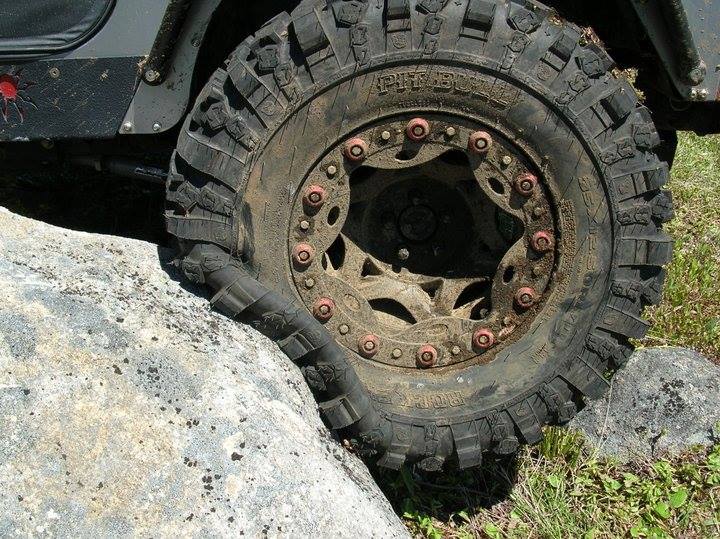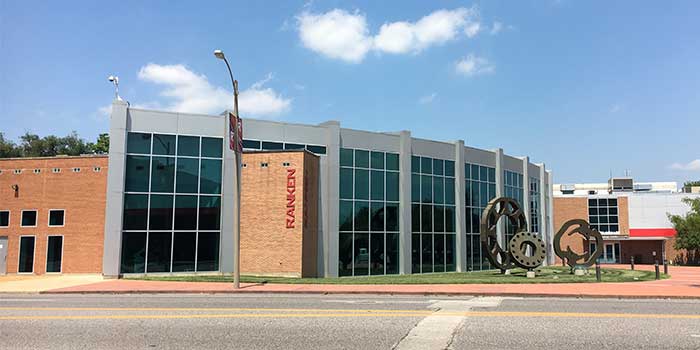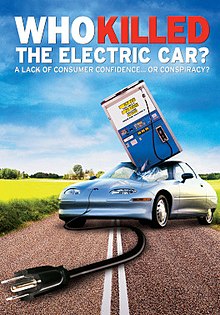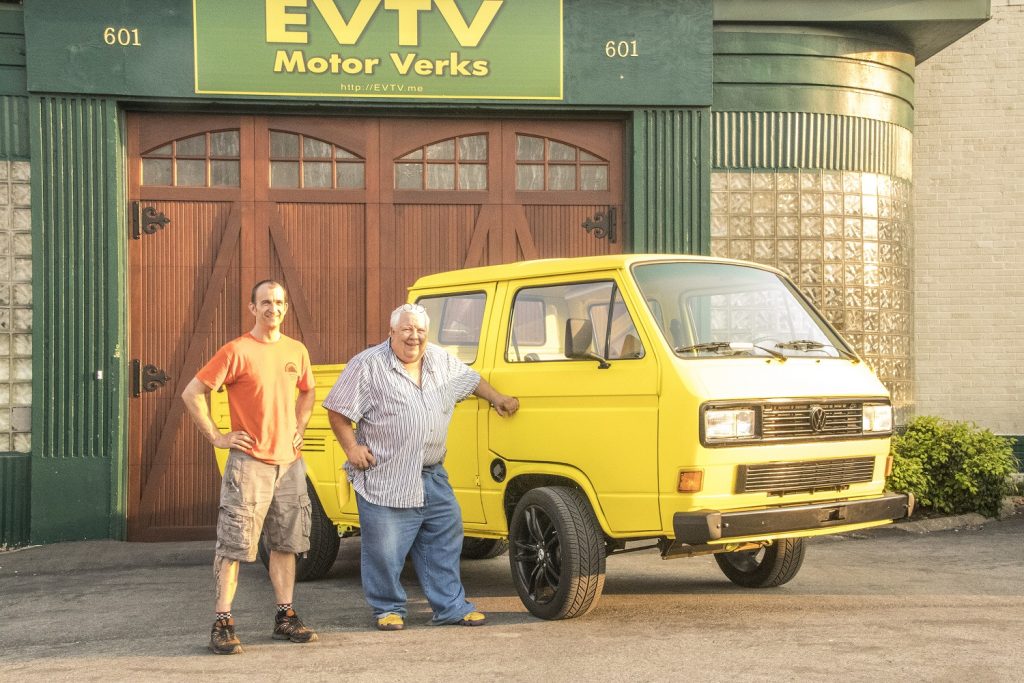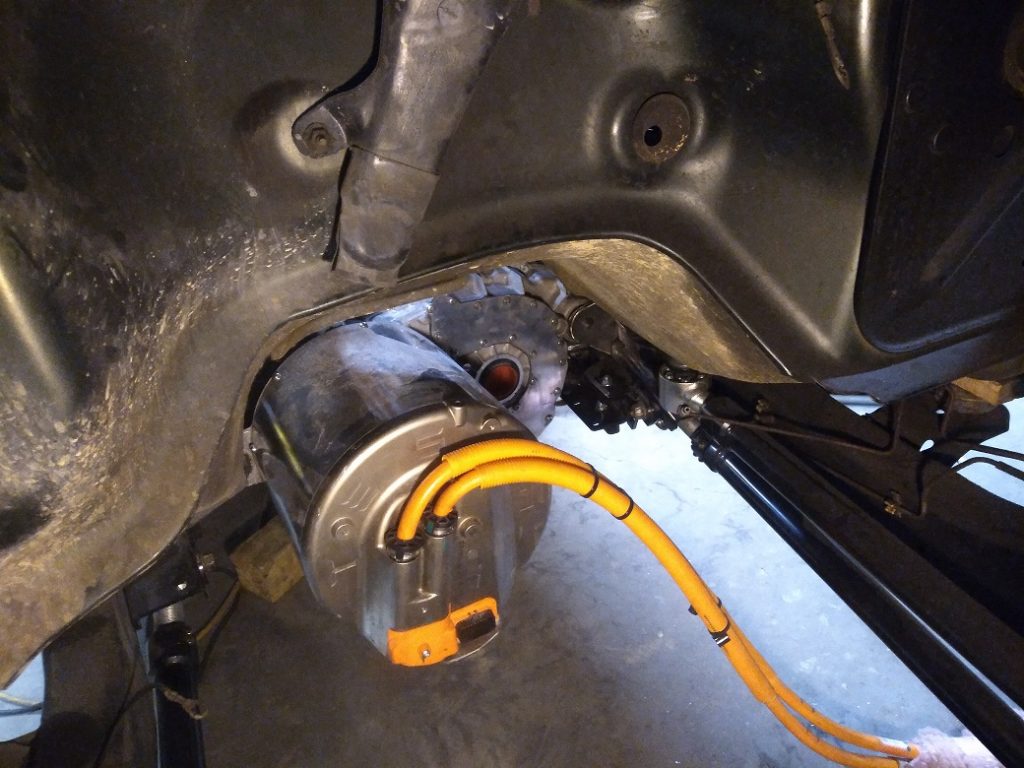Nous aimons beaucoup suivre les projets hors normes au magazine. Et c’est toujours impressionnant de voir le savoir-faire de certains innovateur dans le domaine de l’automobile. Aujourd’hui on vous présente un samouraï entièrement électrique.
- Expliquez-nous d’où est venue l’idée, pourquoi vous faites ce projet et parlez-nous un peu de vous.
Modifier un Suzuki Samurai

C’est le deuxième véhicule à moteur à combustion interne que nous convertissons en véhicule 100 % électrique. Le Samurai a encore une transmission intégrale, et la performance s’est améliorée, même à 115 V avec un moteur d’entraînement à courant alternatif.
À la ferme familiale, en Iowa, à la fin des années 1970, nous avons installé un moteur Chevrolet 283 dans un Jeep Willys 1941. Nous l’utilisions pour tirer les balles de foin ou pour courir après les vaches sur plus de 640 acres. C’était un véhicule de ferme polyvalent que nous pouvions conduire au village ou sur les chemins de terre.
Depuis que j’ai déménagé en Caroline du Nord, en 2000, je suis en contact avec des membres d’un groupe de véhicules électriques de la région de Raleigh. C’est à partir de ce moment-là que je suis devenu accro aux systèmes de conduite électrique, au couple instantané et à la conduite silencieuse, mais surtout au fait de ne plus consommer d’essence. En 2010, Mike Rollins et moi sommes entrés en contact après avoir fait des projets de conversion électrique chacun de notre côté. En comparant nos notes, nous avons remarqué que nous avions beaucoup d’éléments communs. Certaines de nos expériences étaient bonnes, d’autres l’étaient moins. Mike s’est joint au Green Cycle Design Group.
Notre première conversion a été un Factory Five 33 Ford Roadster, en collaboration avec Whitby Motorcars à Greensboro, en Caroline du Nord. En trois mois et demi, nous avons monté un châssis et une carrosserie pour un véhicule tout électrique. Ce fut d’ailleur le premier vehicule électrique à courir sur la prestigieuse piste de course de Charlotte Motor Speedway Charlotte. Elle à fait 0-60MPH en 7,1sec. À cette époque c’étais pas commun de voir des voiture électrique et la première fois sur cette piste d’acellaration, la foule étais silencieuse lorsque qu’elle a vue ce bolide silencieux bruler des robers.


À cette époque, Tesla n’en était qu’à ses débuts et n’était pas encore un acteur majeur. Les entreprises de conversion commençaient à s’installer. Nous avons survécu au mouvement Tesla parce que nous avons créé quatre composants de base pour simplifier les conversions de véhicules électriques. Nous avons inventé un ignition board, un tableau de bord avec cinq indicateurs, un lighting DOT board dont les lumières sont sur des circuits individuels, ainsi que notre propre système de gestion de batterie. Les employés de Whitby nous ont donné tellement de misère que ça s’approchait de l’insubordination. Par contre, au bout de deux semaines de conduite, ils se chicanaient pour pouvoir sortir le véhicule du garage le matin et le rentrer le soir. Ce roadster a été le tout premier véhicule électrique à rouler sur la piste de course de Charlotte. À une vitesse de plus de 225 km/h, il pouvait suivre les bad boys. À partir de ce moment-là, nous avons commencé à chercher des véhicules pour démarrer notre entreprise de conversion. Le Samurai ressemblait beaucoup au Willys 41 que j’avais eu à l’époque de l’école secondaire. Pour la suite, c’est ce que l’animateur de radio américain Paul Harvey appelerait « le reste de l’histoire ».
Expliquez-nous les étapes du montage du véhicule, avec des photos en ordre chronologique. Vous pouvez parler des défis que vous avez rencontrés au cours de votre projet.
Ce que je dis à tout le monde, c’est de choisir un véhicule que vous aurez du plaisir à conduire au cours des dix prochaines années, ou même plus. Il y a des avantages – par exemple, plus le véhicule est léger, meilleure est l’autonomie – mais si vous n’aimez pas le véhicule une fois le projet complété, il ne vous apportera pas la satisfaction que vous recherchiez. Vous allez y consacrer beaucoup de temps. Si vous lésinez sur des choses maintenant, vous obtiendrez un résultat décevant. Je parle par expérience; je l’ai trop souvent vécu. Pour moi, le Samurai était le choix idéal avec son toit et ses portes qui s’enlèvent, sa transmission intégrale, son poids léger, son rayon de braquage court, et le fait qu’il soit un excellent véhicule polyvalent pour faire les aller-retours entre la maison et le travail. Il ne suffit que de le brancher le soir et il est prêt pour le trajet de 48 km le lendemain.
La première étape, c’est de trouver le bon véhicule. Mon partenaire a converti un S-10 1980en 144 V c.c. en installant des batteries au plomb acide. Trois ans plus tard, nous les avons remplacées par des piles au lithium. Le véhicule s’est allégé de 700 lb, et avec une intensité de courant similaire, l’autonomie est passée de presque 64 km à 72 km. Donc, le poids fait une différence.

Nous avons utilisé le Samurai à partir de ce moment-là, et les points à surveiller sont les mêmes que pour tout autre véhicule. Nous prenons en considération des facteurs tels que la distance entre l’avant de la transmission et l’avant du véhicule pour déterminer le type de moteur/contrôleur. Ensuite, il faut examiner le châssis pour voir s’il y a de la rouille ou des faiblesses structurelles. Nous nettoyons toujours le dessous et mettons une couche antirouille sur le belly. Il est beaucoup plus facile de nettoyer et de mettre l’antirouille lorsque tout est enlevé. Avec notre DOT light board, nous enlevons tout le câblage du véhicule et en faisons un nouveau pour nous assurer que tout fonctionne correctement, et ça élimine beaucoup de confusion par la suite. Enfin, il faut localiser et enlever le réservoir d’essence. Il faut prendre de nombreuses mesures et, sur papier ou par dessin assisté par ordinateur, il faut tracer les endroits possibles où installer les batteries.


Pour le Samurai, nous avons opté pour le système d’entraînement de 115 V c.a. en raison de l’espace limité pour le moteur/contrôleur, les batteries supplémentaires et nos cartes de circuit imprimé. De plus, les roues qui tournent n’étaient pas un gros problème en termes d’efficacité et de transport local. Les Samurai, du moins dans les années 1980, n’avaient pas de commandes informatiques pour les freins ABS, par exemple, ainsi nous n’avions pas besoin d’entretenir un ordinateur de bord. Ce système d’entraînement tourne à un maximum de 6800 tr/min, et en conservant la transmission manuelle, nous n’avions besoin que des 2e et 3e vitesses. La marche arrière est bien, mais nous pouvions utiliser la fonction de marche arrière du contrôleur si nous le voulions. Nous avons gardé la marche arrière manuelle pour limiter la vitesse de recul. L’utilisation de la marche arrière du contrôleur permettrait au conducteur de reculer dans n’importe quel gear et d’aller potentiellement trop vite. Si vous choisissez un véhicule avec une boîte automatique, vous devrez ajouter une petite pompe pour maintenir le couple à 700 tr/min – comme un véhicule à essence. Certains contrôleurs permettent cette fonction, mais ce n’est pas un moyen pratique de faire fonctionner un VE. Personnellement, j’aime le changement de vitesse manuel, tirer et grimper sur des roches. D’ailleurs, grimper sur les roches avec ce setup est formidable en raison du régime élevé, du couple à bas régime, du standard high low 4-wheel et de la transmission à 5 vitesses.
Une fois que le système d’entraînement du moteur/contrôleur est choisi, vous devrez faire un gabarit du bell housing (ou encore trouver un adaptateur standard) et percer les trous. Il faut déterminer la distance entre le splined shaft et le motor face. Ça prend du temps et ça vous coûtera environ 400 $ à le faire, mais ça vous permettra d’économiser entre 400 $ et 800 $ environ. Procurez-vous un connecteur lovejoy avec un keyed shaft de 1-1/8″ de diamètre. Percez une extrémité pour emmancher à force la pièce centrale de la clutch plate en conservant les cannelures correspondantes, et soudez cette pièce dans l’extrémité percée du connecteur lovejoy. Le keyed shaft glissera sur le motor shaft (assurez-vous de commander le moteur de cette façon). Vous devrez peut-être fabriquer un spacer plate qui se monte sur le bell housing et le motor face plate. J’ai utilisé une plaque d’aluminium de 4 pouces d’épaisseur, découpée au jet d’eau. J’ai dû ajuster un trou pour que ça fit parfaitement. Le connecteur lovejoy (ou trouver comment adapter la clutch plate) est nécessaire, car le couple instantané usera les cannelures de la clutch plate si le rubber spider n’est pas présent (ou direct connect – ça aussi, je l’ai vécu). Utiliser un moteur qui n’a pas de freinage par récupération vous permet d’enlever la clutch. Si vous avez un freinage par récupération, une clutch plate setup doit être utilisée pour changer de vitesses. Utilisez les rubber mounting pads du moteur à combustion interne et installez une bracket sur le motor face (à l’extrémité opposée du output shaft). Installez le contrôleur de moteur près du moteur pour que l’appel de courant maximal ne se perde pas dans la résistance des connexions de longs câbles.

Choisir la batterie est une étape cruciale

Choisir une batterie, qu’elle soit au plomb-acide ou au lithium, va coûter cher. Le plomb n’est pas beaucoup moins cher que le lithium et la durée de vie est considérablement inférieure. Parmi les avantages des batteries au plomb, vous pouvez vous en procurez une à peu près n’importe où. Puis si vous êtes à vide, vous pouvez attendre environ une heure et redémarrer pour rentrer chez vous tranquillement. Elles ne requièrent pas de système de gestion de batterie pour les maintenir équilibrées. Cependant, le temps froid peut réduire l’autonomie jusqu’à 40 %. Une batterie au plomb demande 3 fois plus d’espace. Le poids est environ 3 fois plus lourd par kWh. Les piles au lithium peuvent être récupérées ou obtenues auprès d’entreprises de conversion qui en stockent. Vous devez lire les spécifications et savoir quel type de pile vous pouvez ou devriez utiliser. Pour une utilisation VE, vous aurez besoin d’une capacité de décharge minimale de 3C. Cela signifie que pour une capacité de 100 Ah, vous pouvez consommer 300 A en permanence jusqu’à ce que la batterie soit déchargée sans endommager la pile. La plupart des piles ont un 10C pendant 10-15 secondes. Si vous avez un contrôleur de moteur qui peut fournir 600 A au moteur, vous aurez besoin d’une pile de 200 Ah pour éviter de l’endommager à pleine ouverture. Bien qu’il s’agisse d’une grande ouverture, cette règle fonctionne très bien pour permettre aux piles de respirer et de réduire les risques de dommages. En utilisant du lithium, vous devez absolument avoir un système de gestion de batterie (SGB) qui allume et éteint les affaires en fonction de la tension de chaque pile. Si une pile est détraquée, l’ensemble du groupe de batteries a de bonnes chances de suivre rapidement. Nous ne voulons pas vous effrayer, mais le SGB est ce qui vous donnera la tranquillité d’esprit. Notre expérience démontre que vous n’aurez pas à vous en faire pendant les 10 prochaines années en utilisant de très bonnes piles. Une fois le type de batterie choisi, vérifiez les mesures pour voir où vous pouvez installer les piles. Portez une attention particulière au dégagement au sol et à la profondeur du châssis. Le Samourai est limité quant aux emplacements de batterie. J’ai retiré le réservoir d’essence et découpé une zone au-dessus pour insérer une boîte galvanisée d’environ 12″ de large x 13″ de profondeur x 35″ de long. J’ai pu y mettre 20 piles au lithium d’une capacité de 100 Ah. J’ai découpé une zone de 12″ x 12″ x 13″ de profondeur entre la transmission, le pneu arrière gauche et le transfer case, pour en mettre 7 autres. Nous avons fait une plate-forme au-dessus du moteur/contrôleur pour contenir toute notre électronique et 9 piles supplémentaires. C’est un total de 36 piles à 100 Ah connectées en série (positif à négatif partout). En prenant les 36 piles X la tension nominale des piles LiFePO4 à 3,2 V X 100 Ah X 0,8 énergie utilisable, divisé par 1000, ça donne 9,2 kW. Pour ce véhicule, nous obtenons 4,8 km par kWh, ou environ 45 km d’autonomie. C’est correct pour l’utiliser sur la ferme, mais il n’a pas la portée nécessaire pour voyager au travail. Nous avons gardé cette batterie rechargeable pour nous assurer que le système fonctionnait correctement. Depuis, nous avons trouvé une pile de plus petite taille qui nous a permis d’augmenter la capacité en ampère-heure à 31 kWh, ou une autonomie d’environ 150 km. L’ajout de piles plus petites et plus puissantes a demandé la construction d’un boîtier de batterie supplémentaire de 15″ de large X 35″ de long X 8″ de profondeur. Il rentre parfaitement derrière les sièges et laisse une certaine capacité de chargement. La perte d’espace (pour moi, en tout cas) qui est compensée par un gain d’autonomie est une victoire.

Vient ensuite le convertisseur CC-CC. Il est similaire à celui d’un générateur/alternateur avec un moteur à combustion interne. Le convertisseur CC-CC prend la pleine tension du pack et la convertit en 12,8 V ou celle d’une batterie auxiliaire. Il fait fonctionner les lumières et toute autre chose branchée au 12 V. Vous devez additionner tous les tirages possibles de 12 V, tels que les lumières, la radio, les contacteurs, etc., puis ajouter environ 20 % pour la sécurité. Les freins du Samurai fonctionnent presque aussi bien que les originaux, mais s’ils étaient un peu plus forts, ce serait bien. Je prends un peu plus de précautions et je laisse un peu moins de temps de réaction (pas beaucoup moins). Le premier Samourai que j’ai converti avait besoin d’une pompe à vide, et je ne suis pas sûr pourquoi, car les deux sont de la même année de modèle. La pompe à vide requière plus courant et s’allume et s’éteint constamment, alors elle va absorber beaucoup de courant au fil du temps. Vous devrez peut-être envisager d’ajouter un vaccuum booster à votre système de freinage s’il dépendait du moteur à combustion interne.

Le chauffage et l’air climatisé utilisent beaucoup la batterie. En optant pour le Samurai, j’ai pu éliminer le besoin de climatisation, puisque le toit et les portes s’enlèvent. Si l’air climatisé est une de vos exigences, vous pouvez commander un moteur avec des double ended shafts. Le contrôleur doit pouvoir maintenir 700 tr/min pour continuer de faire fonctionner l’air climatisé pendant que le véhicule est immobilisé aux arrêts et aux feux de circulation. Le chauffage, quant à lui, est nécessaire pour respecter les normes de sécurité routière. Il sert surtout à dégivrer le pare-brise. Toute chaleur supplémentaire dans le Samurai est gaspillée; c’est difficile de chauffer toute la cabine. En gros, habillez-vous avec plusieurs épaisseurs pour rester au chaud. Nous voulons installer un élément de chauffe-eau en ligne de 4000 W dans un réservoir et le faire circuler par les conduits existants. Certaines personnes ont installé des radiateurs en céramique où se trouvait le finned core, mais 1500 W ce n’est pas beaucoup pour garder les passagers au chaud.

Tout ça peut sembler intimidant pour la première conversion. Lorsque nous avons monté notre premier véhicule, il y avait plusieurs conversionnistes qui faisaient des packages. Ils rassemblent quelques morceaux de base, tels que le moteur, le contrôleur, les convertisseurs, mais délaissent les petits comme les contacteurs, les relais, les fils, les connecteurs, les outils. Une fois que vous vous êtes lancés et que vous réalisez qu’il vous manque des morceaux, c’est frustrant. C’est surtout frustrant quand vous constatez qu’il vous manque encore quelque chose après avoir commandé, attendu et installé un morceau. Le temps et les coûts imprévus font que votre projet commence à ressembler à un gouffre financier. Du moins jusqu’à ce que vous fassiez votre premier tour du pâté de maisons. Votre sourire vous fera dire que ça en valait la peine. J’ai assisté à plusieurs Cars & Coffee avec différentes conversions et j’ai toujours été bien reçu. C’est incroyable comment plus de puissance (électrique ou à combustion interne) a cet avantage concurrentiel qui engendre une meilleure compréhension de la façon dont nous pouvons progresser ensemble. Par exemple, dans les années 1960 et 1970, les mécaniciens de moteurs à combustion interne ont fait en sorte que Détroit construise de meilleurs véhicules. Nous avons maintenant une nouvelle génération de jobineux qui font la même chose aujourd’hui mais à un rythme beaucoup plus rapide. Ce qui m’a manqué dans les années 1970, c’est le son de la puissance. Lorsque nous coursions sur la piste avec notre 33 Ford roadster, on aurait entendu voler une mouche. Tout le monde pouvait entendre les pneus tourner et voir la fumée, mais ça manquait de bruit de moteur.
Dites-nous où vous en êtes dans le projet et ce qu’il vous reste à faire. Vous pouvez inclure des spécifications et des données du véhicule. Quel est le prochain projet que vous avez en tête?
Nous sommes en train de remplacer la batterie pour rendre le Samurai plus convivial. Une fois que ce sera fait, nous le replaquerons pour la route. Nous avons constaté que la conduite locale demande une autonomie d’environ 129 km pour pouvoir utiliser le chauffage, l’air climatisé et s’amuser un peu, le cas échéant. L’accélération de 0 à 100 km/h se fera en environ 8 ou 9 secondes, ce qui est mieux que le moteur à combustion interne d’origine. Notre roadster a été l’un des premiers à le faire en 7,2 secondes, et c’était très impressionnant à l’époque. Nous pourrons le dépasser en moins de 10 ans grâce à une combinaison de tension plus élevée et plus de courant alternatif au lieu de courant continu. Les systèmes d’entraînement à courant alternatif peuvent atteindre de 10 000 à 14 000 tr/min, et avec le bon gearing, ils peuvent atteindre 0-100 en moins de 3 secondes. Le développement de notre ignition system, de notre DOT lighting board, de nos indicateurs et de notre système de gestion de batterie nous ont aidés à simplifier les conversions et à accélérer le processus.
Nous avons déjà un autre projet de camion dans lequel nous avons enlevé le système d’entraînement d’un Nissan Leaf que nous prévoyons installer dans une camionnette coréenne similaire au Ford Explorer. En utilisant l’inverter et le système d’entraînement à courant alternatif, nous aurons du chauffage et de l’air climatisé à partir d’une pompe à chaleur air-air. Nous allons y mettre 100 LiFePO4 au graphène, ce qui donnera une autonomie d’environ 483 km et une durée de vie d’environ 10 000 cycles de la décharge profonde à la charge complète. Nous nous attendons à ce que ce système fonctionne pendant 10 ans ou même plus.
Merci à Ken Clayton chez Green Cycle Design Group
Dave Daneault chroniqueur 4x4setupMagazine






























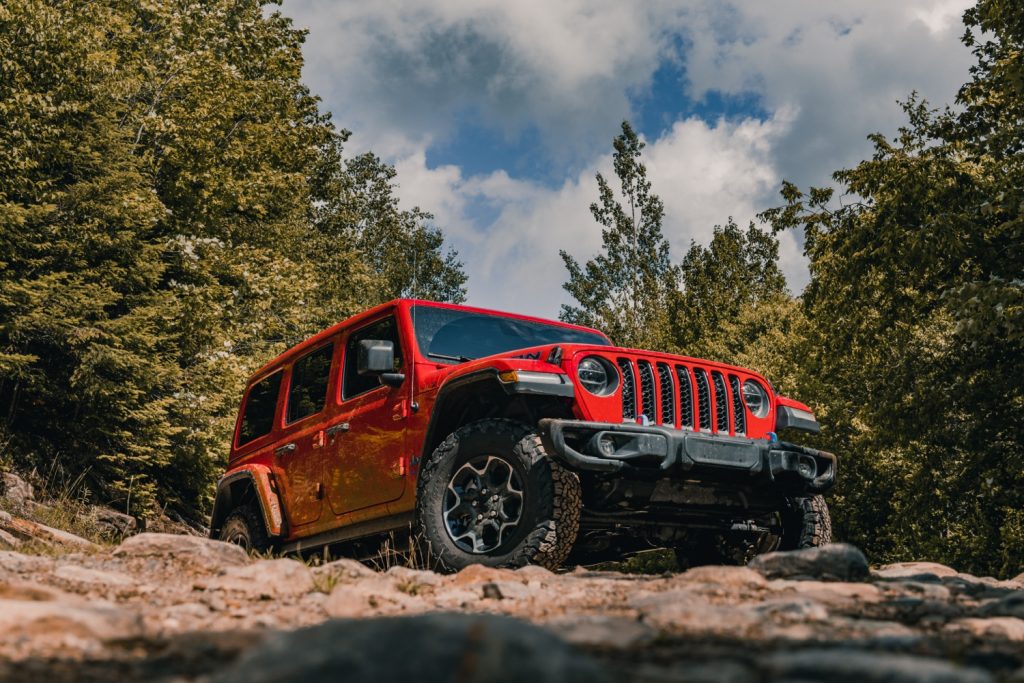


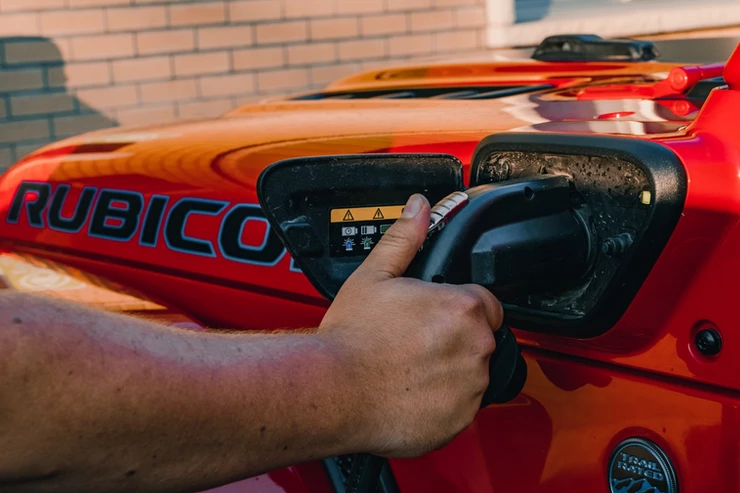
















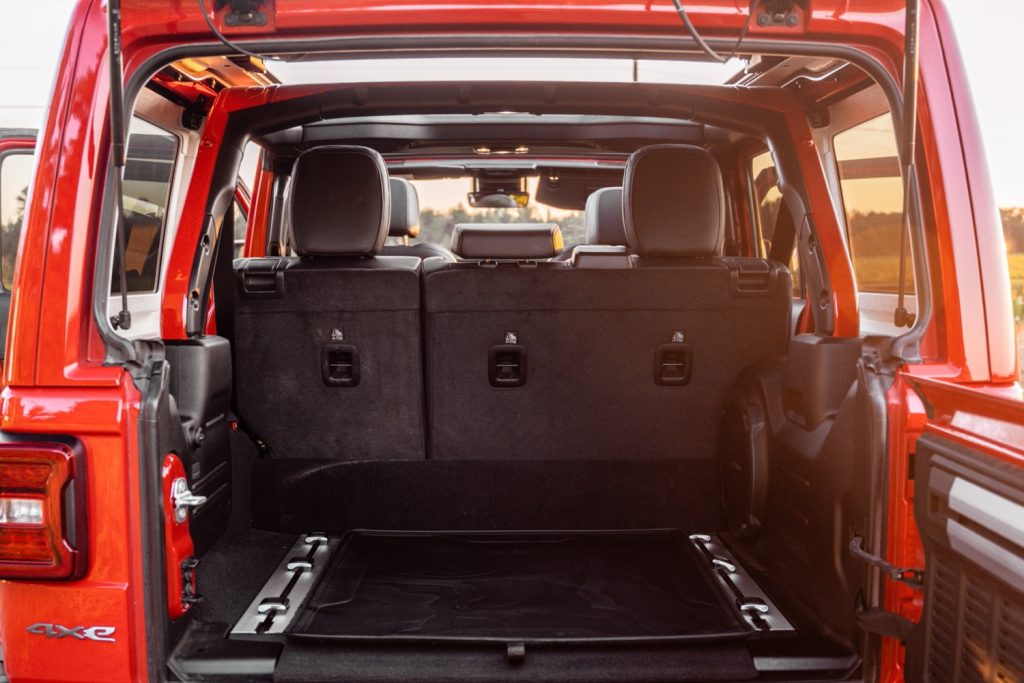
















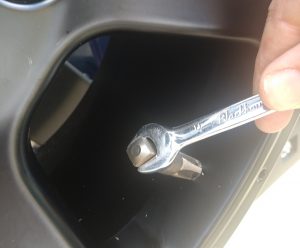

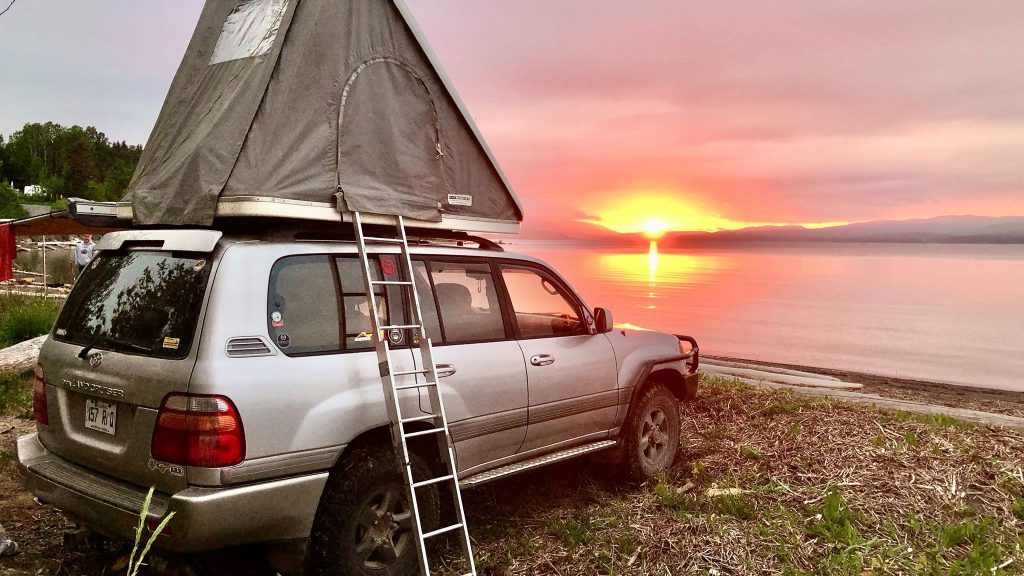


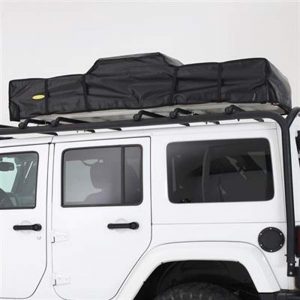



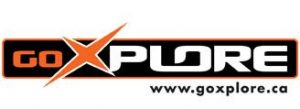 : http://www.goxplore.ca/
: http://www.goxplore.ca/




